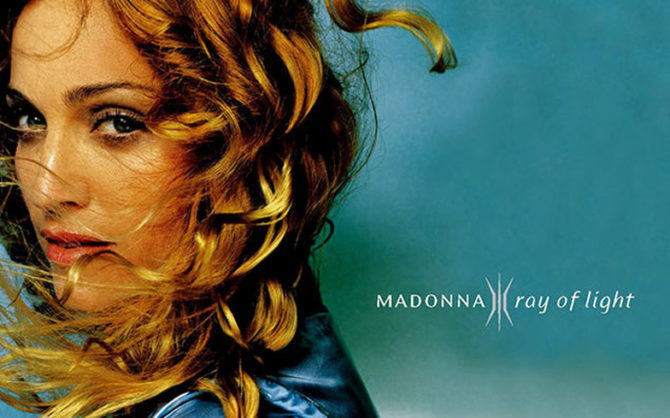What professional peaks were there really left for the Queen Of Pop to scale 14 years after her 1983 breakthrough? Now with more records sold than even she may have expected; groundbreaking concert tours under her belt; a recent Golden Globe; and finally, perhaps, even critical acceptance… a conservative approach should be the obvious answer. But then that has never really been Madonna’s style. For Ray Of Light, her final album of the 90s, she was ready to prove she could keep pace with the changing face of music at the end of the millennium.
Listen to Ray Of Light here.
“My music is a reflection of where I am”
A lot had changed in Madonna’s life – she had recently become a mother and wanted her next recordings to reshape her sound, too. Plans to reunite with 1994’s Bedtime Stories collaborator Babyface were aborted in early 1997 after initial sessions signalled more of the same. That really wouldn’t do. The idea to collaborate with the experimental British producer William Orbit was, however, a leftfield move. Their vision was to pair his sonic eccentricity with Madonna’s trademark melodic flair and more confident vocals – sharpened-up considerably from the recent Evita movie soundtrack.
By Madonna’s restless standards, the recording sessions with Orbit proved laborious, with the maverick insisting getting everything spot-on. “I’d get to the end of the day and we wouldn’t really have accomplished much, but we’d sort of get some textures for a song,” Madonna recalls. Across four months the Ray Of Light album slowly took shape, with Orbit co-producing all but one of the 13 cuts (the Japanese market got an extra track in Has To Be).
Pop-art of the finest form
Longtime fans were possibly more excited by the writing reunion with Patrick Leonard, who had steered Madonna’s True Blue album to huge sales just over a decade earlier and shaped her subsequent critical game-changer, Like A Prayer. Leonard shares credits on four Ray Of Light tracks, while veteran hitmaker Rick Nowels might have been expected to helm all the singles picked from the album, but in fact only The Power Of Goodbye was lifted for single release from his three collaborations.




